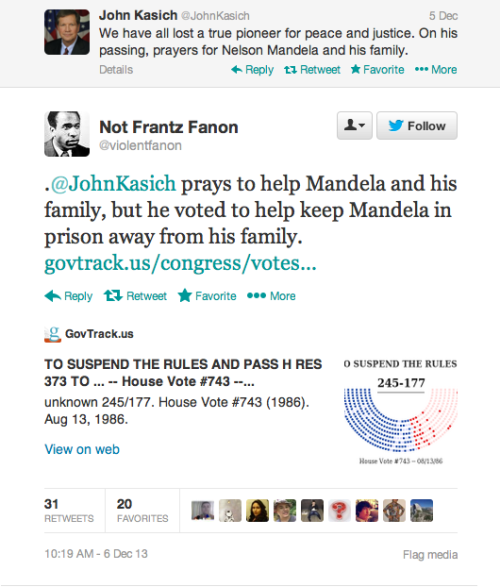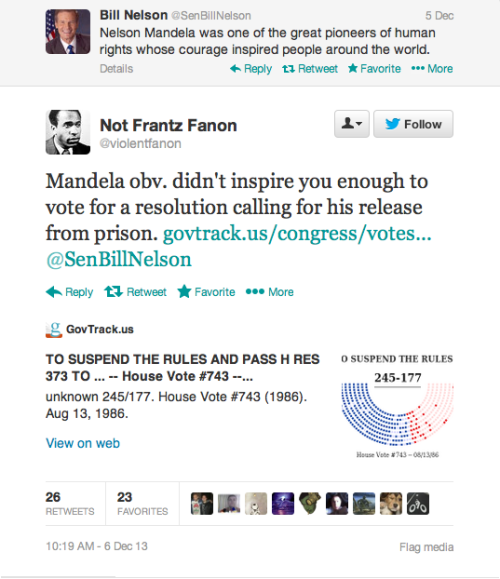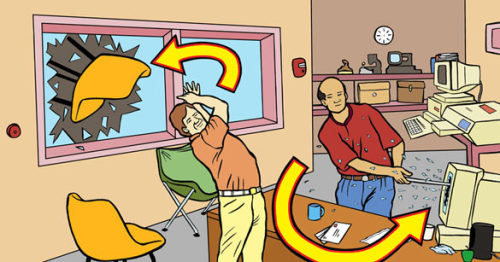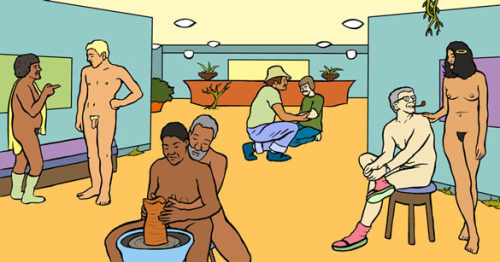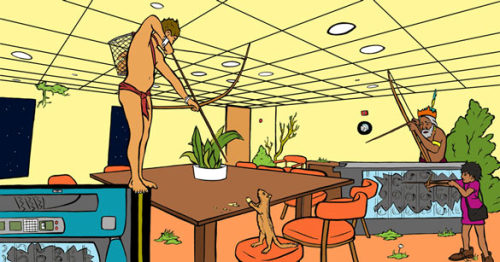
Shared posts
Mobile Face-Recognition-App to identify Strangers
 Kiss your Meatspace-Anonymity goodbye: Eine kommende Mobile App gleicht Fotos per Gesichtserkennung mit Social Media-Profilen ab und schickt den Namen von Fremden inklusive Links zu Facebook und Twitter und Dating-Sites. Auf ihrer Website drohen sie schon mit: „this is just the beginning“. Bring out the Creeps!
Kiss your Meatspace-Anonymity goodbye: Eine kommende Mobile App gleicht Fotos per Gesichtserkennung mit Social Media-Profilen ab und schickt den Namen von Fremden inklusive Links zu Facebook und Twitter und Dating-Sites. Auf ihrer Website drohen sie schon mit: „this is just the beginning“. Bring out the Creeps!
An upcoming app for Android, iOS, and Google Glass called NameTag will allow you to photograph strangers and find out who they are — complete with social networking and online dating profiles.
Spot someone out and about that you want to identify, and you can capture their face using your device’s camera. The app will send the photo wirelessly to NameTag’s server, where it will compare the photo to millions of online records and return with a name, more photos, and social-media profiles, such as Facebook, Twitter, and Instagram, where the person (or their friends) might have publicly posted photos of themselves.
Facial recognition app matches strangers to online profiles (via Algopop)
privilege summed up in a rly cute little comic.
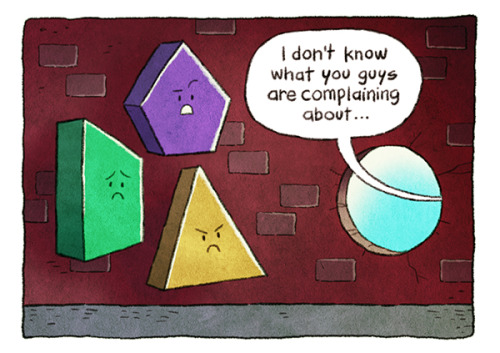

privilege summed up in a rly cute little comic.
Google Removes "Search Nearby" Function From Updated Google Maps
JagripinoGoogle's new motto: We're not only evil, we're also stupid. Oh, and also, if you use your products, fuck you. We don't care.
Read more of this story at Slashdot.
12 Shows to Binge Watch on Netflix During Winter Storm Hercules
Stuck inside thanks to Hercules? You might want to catch up on some of the best streaming shows on Netflix:
Submitted by: Amemeda
Woman-as-Cat in Anti-Suffrage Propaganda
Cats and dogs are gendered in contemporary American culture, such that dogs are thought to be the proper pet for men and cats for women (especially lesbians). This, it turns out, is an old stereotype. In fact, cats were a common symbol in suffragette imagery. Cats represented the domestic sphere, and anti-suffrage postcards often used them to reference female activists. The intent was to portray suffragettes as silly, infantile, incompetent, and ill-suited to political engagement.
Cats were also used in anti-suffrage cartoons and postcards that featured the bumbling, emasculated father cruelly left behind to cover his wife’s shirked duties as she so ungracefully abandons the home for the political sphere. Oftentimes, unhappy cats were portrayed in these scenes as symbols of a threatened traditional home in need of woman’s care and attention.
While opposition to the female vote was strong, public sentiment warmed to the suffragettes as police brutality began to push women into a more favorable, if victimized, light.
As suffragettes increasingly found themselves jailed, many resisted unfair or inhumane imprisonment with hunger strikes. In response, jailers would often force-feed female prisoners with steel devices to pry open their mouths and long hoses inserted into their noses and down their throats. This caused severe damage to the women’s faces, mouths, lungs, and stomachs, sometimes causing illness and death.
Not wanting to create a group of martyrs for the suffragist cause, the British government responded by enacting the Prisoner’s Act of 1913 which temporarily freed prisoners to recuperate (or die) at home and then rearrested them when they were well. The intention was to free the government from responsibility of injury and death from force feeding prisoners.
This act became popularly known as the “Cat and Mouse Act,” as the government was seen as toying with their female prey as a cat would a mouse. Suddenly, the cat takes on a decidedly more masculine, “tom cat” persona. The cat now represented the violent realities of women’s struggle for political rights in the male public sphere.
The longevity of the stereotype of cats as feminine and domestic, along with the interesting way that the social constructions flipped, is a great example of how cultural associations are used to create meaning and facilitate or resist social change.
Cross-posted at Jezebel and Human-Animal Studies Images.
Ms. Wrenn is an instructor of Sociology with Colorado State University, where she is working on her PhD. She is a council member of the American Sociological Association’s Animals & Society section and has published extensively on the non-human animal rights movement.
(View original at http://thesocietypages.org/socimages)
jamietheignorantamerican: Go Forth and Educate...

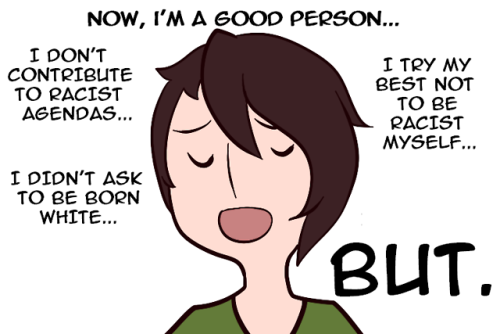


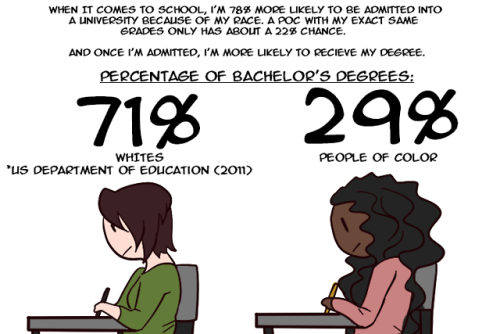
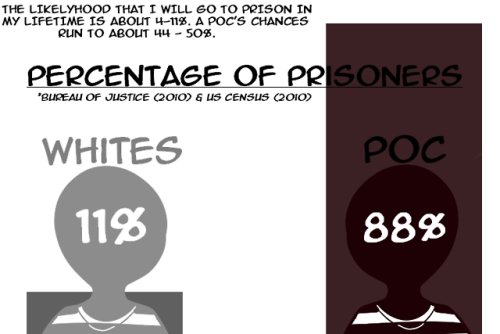
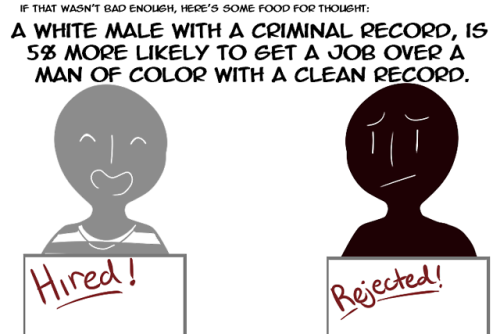
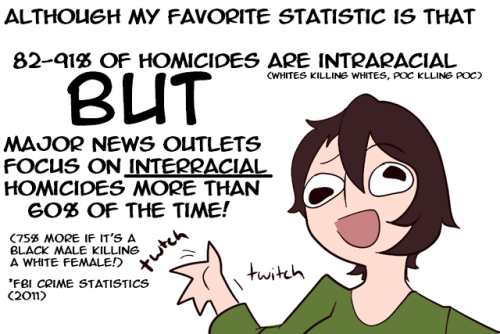


Go Forth and Educate Yourselves!
- http://thesocietypages.org/
- http://www.ensemble-rd.com/en
- http://www.everyday-democracy.org/en/index.aspx
- http://www.stophate.us/racism/
- http://www.victimsofcrime.org/home
- http://en.wikipedia.org/wiki/Racism
- http://www.communitychangeinc.org/
- http://en.wikipedia.org/wiki/White_privilege
- http://ted.coe.wayne.edu/ele3600/mcintosh.html
- http://www.whiteprivilegeconference.com/white_privilege.html
I’d also highly recommend watching the Jane Elliot Brown-eye/Blue-eye experiments, which can be found here:
- http://www.youtube.com/watch?v=VeK759FF84s
- http://www.youtube.com/watch?v=-pv8mCHbOrs (Part 1)
- http://www.youtube.com/watch?v=neEVoFODQOE (Part 2 - Has very important points on Reverse Racism and how it doesn’t exist)
- http://www.youtube.com/watch?v=6MYHBrJIIFU
State of Play 2013: Ouya falls flat, so where next for alt consoles? Valve could have the answer
JagripinoExcelente ponto. Se as SteamBoxes custarem o mesmo que um PS4, com specs similares ou melhores, com os preços de jogos de Steam e a comunidade que já existe nele, acabou para os consoles.

The Ouya sold well on a promise, smashing its Kickstarter goal by more than $7 million. But its reception by backers, early adopters and press has been mixed.
Only a cynic could look at something like Ouya and not be impressed by its pluck. There it was, lacing up its tiny gloves and boots and throwing itself into the ring just as Sony and Microsoft’s heavyweight prizefighters were about to start knocking bells out of each other. The Ouya was the little console that could; Kickstarter’s 8.6 million dollar gaming baby.
At least, that was the Ouya’s promise. The reality of 2013′s first ‘alternative’ console was confused. The Ouya sold well as a concept, bringing new and existing indie titles to the living room with a try-before-you-buy system that sounded like a boon for consumers. No handing over cash to an unscrupulous publisher only to find you’ve bought a half-broken howler of a game; the Ouya was cheap, cheerful and on the side of the consumer rather than big business – a console for the masses. Unfortunately, the masses just didn’t seem that impressed with the Ouya or its developer’s promise of a budget game “revolution”.
With such a small install base, games on the Ouya sold poorly. Small studios with Android games ready to launch or already available on mobiles and tablets could port a version over very easily and perhaps net a tidy four-figure bonus for themselves, but developing exclusively for the Ouya (which is what the company wanted with its Free The Games programme, wherein it would match any Kickstarter donations for a game above $50,000 in return for a whopping six months of exclusivity) just didn’t make sense.
Nor did it get better from a consumer perspective. No matter how good the marketing bumf around the Ouya, what you were buying was an underpowered console running games on an outdated Tegra 3 chip. Early reviews reported sluggishness just in navigating its menu screens and lack of responsiveness in some games that made them frustrating to control. Had the Ouya launched two or three years ago that would have mattered less, but it launched in a year dominated by the impending arrival of PS4 and Xbox One. With both of those consoles plastered over every flat surface reachable with a step ladder, and Sony and Microsoft compensating for a lack of killer launch titles by talking up their power and graphics, Ouya looked more and more like a toy. How were people supposed to get excited about playing a port of Sonic The Hedgehog when Microsoft and Sony were showing endless loops of near-photorealistic sports cars sliding around tracks in Forza and Driveclub?

Towerfall has been one of the Ouya’s few success stories, while other indie developers for the console reported disappointing sales figures.
Then there were mobile games that sought to emulate console successes in the first place. ‘Serious’ games like Killing Floor and Shadowgun still sit in Ouya’s top ten titles list, but it’s an oddly roundabout way to play a first-person shooter, if that’s the sort of game you’re into. A mobile game aping the style of a console game that you can now play as a port on a console? It might be the best way to play Shadowgun, but it’s hardly going to be the FPS purist’s first choice.
Finally, there’s the uncomfortable question of how big the intersecting segment on the Venn diagram is of ‘people who like games enough to have heard of the Ouya’ and ‘people who don’t already own anything to play them on’. The Ouya sells in the UK for £99, and of games devices released in 2013, it’s one of the cheapest options (barring other Android consoles like that other damp squib, GameStick). But if it’s games you’re after first and graphical fidelity second, Amazon sellers will do you a second-hand PS2 for about £40, and games for pennies plus postage.
Where does this leave the future of ‘alternative’ consoles, then? Pretty squarely with Valve and its Steam Box.
No-one quite knows how the Steam Machines will work yet – we know there will be multiple versions made by different companies all running the SteamOS, but how different models will differ in price and power still hasn’t been laid out. Assuming the lower-spec machines launch at a similar price point to the PS4 and the Xbox One, Valve’s own next-gen consoles could have two significant advantages over both. Not fringe interest, technically-yes-it’s-better-on-paper advantages like the Xbox One handling eight controllers at once to the PS4′s four. But proper, game-changing, who-can-I-sell-my-console-to advantages.

Valve’s Steam Machines could skewer the Xbox One and PS4 with a wider back catalogue and the promise of Steam Sales.
Firstly, there’s the Steam back catalogue. Even if cheaper versions the box were to turn out less powerful than the PS4 and Xbox One, so what? The launch titles for both consoles range from OK to pretty good. But even if they were the best games ever committed to disk, delivered on the wing by an angelic host, there’s no way they could go toe-to-toe with the three thousand games Valve are promising for their Steam Machines. With neither the Xbox One or PS4 offering backwards compatibility, the pickings for early adopters aren’t just slim, they’re skeletal.
The second advantage will deal damage over time: Steam Sales. Sony and Microsoft’s current pricing structures for digital distribution are, bluntly, a joke – EA’s PS4 games were selling on the PSN for £62.99 at launch, a full £13 over the disc version’s RRP (and almost double what you can pick a new game up for with some deft Googling). The reason for these prices is speculated to be that high street retailers have enough sway with the companies to keep them artificially high – ‘don’t undercut us, or we won’t stock your game’.
Valve doesn’t have that problem. Not only could they theoretically sell Steam copies of new releases for PC prices (currently about £29.99 compared to £49.99 on the Xbox One or PS4) as they do now, but they’d be able to bring the prices even lower with sales. Suddenly a game that’s still £40 on Xbox One and PS4 is £5 on the Steam Box. Even Sony’s excellent PlayStation Plus service, with its Instant Game Collection, couldn’t compete with that.
The Ouya and its ilk have identified the problem of console gaming: that it’s expensive. But their model for tackling it is flawed; cheap consoles and cheap games aren’t a challenge to Sony and Microsoft, they’re a concession.
So we’re left with Valve. Bringing the current Steam experience to the living room won’t just challenge the PS4 and Xbox One – if Steam Machines can come close to matching them on specs and price, it would put them both, in terms of long-term investment and player experience, in second place.
The post State of Play 2013: Ouya falls flat, so where next for alt consoles? Valve could have the answer appeared first on Edge Online.
State of Play 2013: Sony and Microsoft do battle in a console war for the ages
JagripinoRight now, PS4 remains the connoisseur’s choice. It is the more powerful box, its social features are neat and accessible, and its launch titles are solid, if not truly essential. Its PlayStation Plus service remains excellent, and let’s not forget how handsome Sony’s console is in the flesh. PS4 has won the battle in 2013 – just – but Microsoft’s console might yet win the war.
Has there ever been a more dramatic twelve months in the games business? Yes, we’ve watched as microtransactions invaded console games, Nintendo’s problems mounted, VR returned, alt consoles emerged to challenge the status quo and online communities became ever more powerful, but it is the battle between Sony and Microsoft that was the most thrilling and controversial tale of this year – and perhaps any other in the medium’s history.
It had everything. And appropriately for this time of year, Microsoft spent much of 2013 playing the pantomime villain. A couple of stories from our well-placed sources set the scene: on February 1, we revealed what we knew about PlayStation 4 before anything had been announced or confirmed, and a few days later, we did the same with what was then known as the next Xbox. What we’d learned of PS4 at that point suggested that it was a smart, if hardly revolutionary, next step for Sony, a powerful games console with a more open, social feel. Meanwhile Microsoft’s next console would block second-hand games, require an internet connection and would ship with Kinect, whether you wanted it or not. It wasn’t as powerful as PS4 nor as developer-friendly. Not a great start for Microsoft, then, and the battle for hearts and minds hadn’t even officially begun.
At the PS4 reveal event on February 20, it got worse for Microsoft purely because Sony got so much right. At PlayStation Meeting, Sony’s rhetoric somehow struck a balance between humility and hyperbole, the platform holder pitching PS4 as a console built with developers and players in mind – quite a reversal from its approach with PS3. Perhaps aware of Microsoft’s well-known desire to make its next Xbox the centrepiece of the living room (and with the understanding that it had enough money to buy the exclusives and marketing to do so) Sony knew it had to gain industry and hardcore support at launch or PS4 was doomed. It succeeded.
Meanwhile, Microsoft could not confirm the existence of the console we all knew was coming for months, even after Sony’s unveiling and GDC in March. Sony’s early semi-reveal meant that at the annual creator’s pow-wow, countless developers could talk in loose terms about one next gen console, but had to deny all knowledge of the other. All the while, the rumours got worse and all of the excellent work Microsoft had done with 360 was slowly unravelling. It inspired an editorial from your humble scribe intended to outline the madness of such a long silence – it had become not just ridiculous but damaging to pretend that it didn’t exist – the best thing Microsoft could do was just show it to us, we concluded.
And when Microsoft finally did reveal its next console, it was spectacularly misjudged.
On May 21, the games industry and millions of players watched a livestream of the next Xbox reveal, and afterwards, started to wonder what exactly they’d seen. Microsoft seemed to have pitched it at some fictional segment of players who really wanted their Xbox to be more like an interactive cable box and less like a games console. As we noted afterwards, the questions answered in the Xbox showcase weren’t the ones real people were asking: what does the new console do that my 360 doesn’t? Which new games will I be playing on it? Can I play second-hand games? Will it be backwards compatible?
In the void where facts should have been, confusion reigned in the media, among players and even in executive interviews – in some cases one senior Xbox spokesperson contradicted the other. We were urged to wait until E3 to get the full picture; at that event, Microsoft actually did just fine.
It was only after Sony’s conference that Microsoft’s evasive and unconvincing performance became clear. Our review of Sony’s conference even wondered if Xbox One could recover from such a comprehensive shoeing. Sony seemed to understand its audience perfectly and played to that strength, though it took a good hour to get into its stride. PS4 was easier to understand, sexier, had a ton of games and seemed the better fit for indie developers. It was cheaper. It was the subject of a mischievous, brilliant viral and went on to become the subject of one of the most talked-about Edge covers ever produced.
From February to June and beyond, Sony’s PS4 pitch had a humility and humanity that Microsoft’s slick besuited execs couldn’t beat. Whether it was Mark Cerny on stage or Shuhei Yoshida on Twitter, Sony had well media-trained personalities who seemed to belong to some oddly wholesome videogame family; Microsoft had automatons with side partings like Don Mattrick, who left for Zynga (and an enormous amount of money) soon after introducing the new Xbox. It was his departure, among so many sensational post-E3 developments, which started Xbox One’s redemption.
The platform holder had to act, and act quickly. But even the astonishing policy reversals which followed that fateful E3 seemed to happen in slow motion, half-announced on Twitter, clarified by Major Nelson and then officially confirmed and explained. It was a mess, and it maintained and intensified Microsoft’s torture. It took a while, but Xbox One was slowly being purged of its sins – always-on, that DRM, mandatory Kinect – and when Microsoft finally came out of the other end, we ended up with a very different console. By Gamescom in August, we had a leaner contender with a hastily-assembled indie program, ID@Xbox, and a fairer fight.
What has become clear about the power of community throughout is that once players get their way, all is (almost) forgotten. The real trick is to work out what they want and deliver that before dreaming of some distant future in which games consoles displace set-top boxes. Actually, as PS4′s reception has proved, what players wanted wasn’t a giant leap forward into an always-on, always connected world, nor was anyone ready to sacrifice their rights to physical game ownership in exchange for some half-explained cloud future. Microsoft might even have been guilty of being too honest, in fact; it would have been wiser to keep quiet about its burning desire to ‘own the living room’ and concentrate on a simpler goal – ensuring that as many 360 owners as possible upgrade to Xbox One rather than switch allegiances to PS4. It didn’t, and it paid the price.
Though it was difficult to imagine after the scale of PlayStation’s triumph at E3, we end the year with Sony and Microsoft’s new consoles apparently almost neck-and-neck. 2.1 million PS4s had been sold by December 3, said Sony recently, and Xbox One had sold two million when Microsoft went public with its hardware sales on December 11, having launched in far fewer territories.
Right now, PS4 remains the connoisseur’s choice. It is the more powerful box, its social features are neat and accessible, and its launch titles are solid, if not truly essential. Its PlayStation Plus service remains excellent, and let’s not forget how handsome Sony’s console is in the flesh. PS4 has won the battle in 2013 – just – but Microsoft’s console might yet win the war.
Just as Sony’s hubristic PS3 launch had damaged its prospects early on, Microsoft’s troubles in 2013 will soon fade from memory. At least it had the good sense to change its approach to Xbox One before it launched, rather than battling on and hoping for the best as Sony once did. In a few years, when those pre-launch press conferences and disc-based games seem quaint, perhaps it’ll be Microsoft’s console which turns out to be the superior multimedia box. It certainly has the stronger ambitions in that regard, and the finances to achieve that long-held dream. Sony will look to broaden its messaging around PS4 soon enough, but throughout it all, Xbox has just about retained its hold over the US market, one which will ultimately decide the victor this generation.
For now, at the end of an unforgettable year, it’s almost a relief to have millions of new gameboxes out in the wild. Certainly, Microsoft will be delighted that the conversations around these new consoles have moved on from policies to the games themselves. 2014 will bring us plenty of those, and from this point onwards Sony and Microsoft’s battle takes on a different tone. The next twelve months will bring us something more tangible than press conferences and product positioning – proper next-gen games – but the coming year will never be able to top the drama and controversy of an explosive 2013.
The post State of Play 2013: Sony and Microsoft do battle in a console war for the ages appeared first on Edge Online.
aloveleelady: How to be a Reverse Racist JESUS...
Photos of Girl Pilots Training Flights at Avenger Field, 1943
See more »
dolphin-spit: oswaldofguadalupe: The Twitter Mandela Hall Of...
Poupe suas balas
Uma dica para VOCÊ, Assasino Atirador de Elite!

Dá uma ligada na cara de surpresa e realização ao mesmo tempo na cara do atirador.
Arrancado do Pandyland.net
Smart People Get Wasted More
Alice Robb examines some research showing that drinking and drugging in adulthood correlate with higher childhood intelligence:
Drawing on the results of the National Child Development Study, which tracked for 50 years all British babies born during one week in March 1958, [evolutionary psychologist Satoshi] Kanazawa found that kids who scored higher on IQ tests grew up to drink larger quantities of alcohol on a more regular basis than their less intelligent peers. He evaluated other factors, including religion, frequency of church attendance, social class, parents’ education and self-reported satisfaction with life, and found that intelligence before age 16 was second only to gender in predicting alcohol consumption at age 23.
In Kanazawa’s model, illicit drugs constitute another evolutionarily novel experience—and he (and others) have also found a link between high IQ and experimentation with drugs. In Kanazawa’s study, the higher a respondent’s IQ before age 16, the more psychoactive substances he or she had tried by age 42. Another study found that 30-year-old women who had earned high scores on an IQ test at age five were more than twice as likely to have smoked weed or used cocaine in the previous year; men who had scored highly on IQ tests as children were 50 percent more likely to have recently consumed amphetamines or ecstasy.




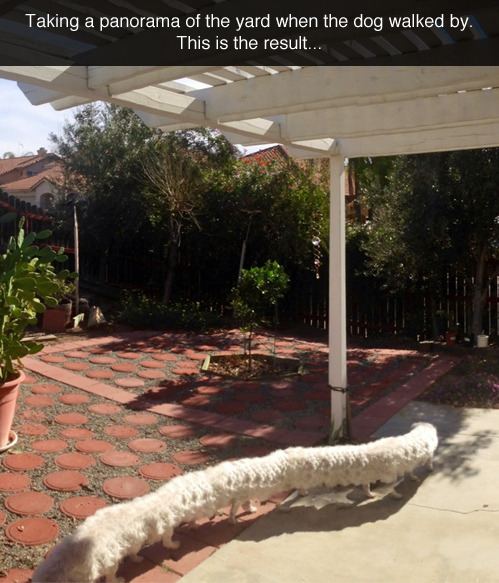


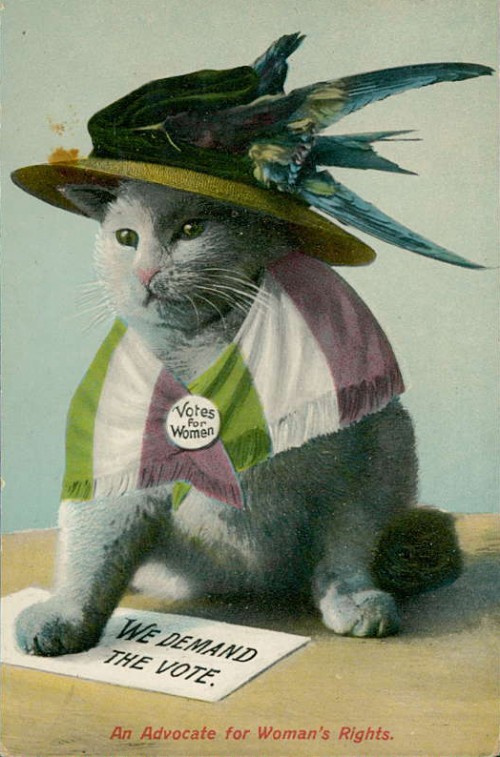


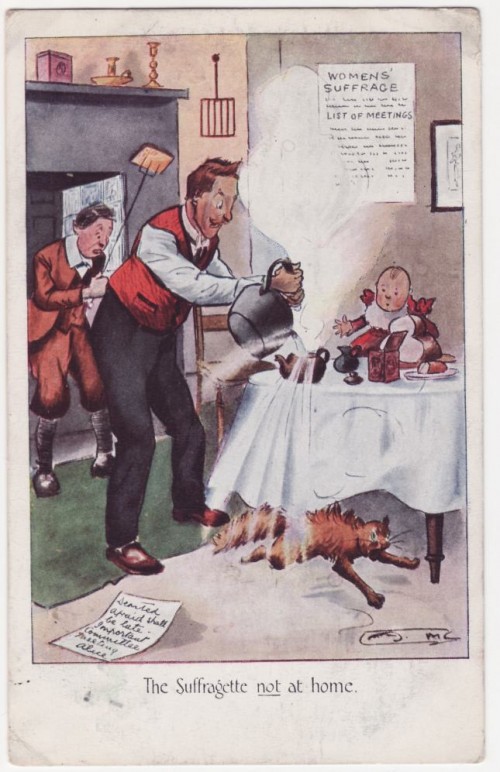



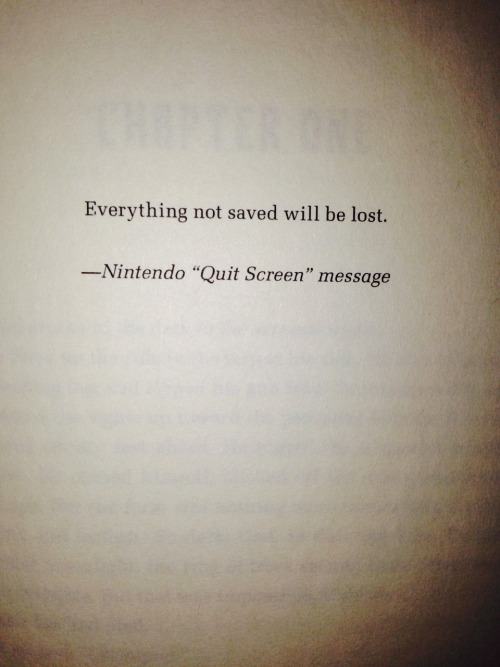










.jpg)
.jpg)
.jpg)
.jpg)
.jpg)




